Did you notice your child showing an increased interest in letters? If the answer is yes, you are in the right place. This activity for preschoolers will help you introduce and teach letters in a fun and unstructured way. And that will help your child to see how letters are fun and it will keep motivation for more future activities with letters.
Article Contents
1. When is the best time to start learning the alphabet letters?2. Materials needed for the Letter Activity
3. How to make the Introduction to Alphabet activity?
4. What skills will you learn and develop?
When is the best time to start learning the alphabet letters?
Actually, there is no easy answer to this question. It largely depends on your culture and pedagogy values that are most prominent. For example, children in the United States are expected to start formal education and learning much sooner than in many other countries.
Finland, for example, uses a much more play-oriented approach without any formal education expectations in kindergarten. Even alternative pedagogies differ on this topic quite a lot. In Waldorf education, there is no formal introduction to letters and the alphabet before elementary school.
On the other hand, the Montessori approach presents writing and reading work much earlier. In Montessori, there is an idea of sensitive periods during development. That means that the child will show intense interest in exploring and learning certain skills. We are here not to teach in a classical sense, but to prepare an environment so that learning can happen on its own. Sensitive periods for writing and reading are around 3 to 5 years old.
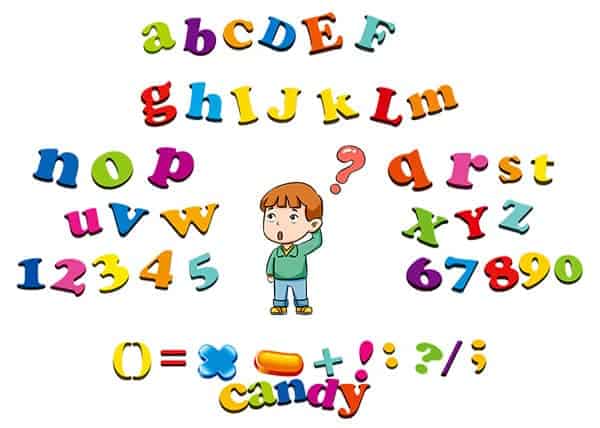
Then, when we ask: “When is the best time to introduce letters to toddlers and small children”, the best answer is – when they start to show interest. There will be big differences between children and some may show interest in letters before age of 3 and some won’t show much interest before starting school.
So when you notice that the child starts to ask about letters, tries to identify them, asks what is written in the book, you may presume it is ready for some letters-based activities.
Also, it is very important to keep those activities playful and avoid any structured method of teaching. Avoid anything that can lead to child hearing no, incorrect, not like that, because that will lead to frustration, disinterest, and fear of making mistakes. In general, an unpleasant experience.
In this age (and most of the time really), learning should be self-directed. We can prepare activities and just sort of leave them there for a child to find. Activities should ideally be made in a self-correcting way, so the child can notice if they do it the expected way. Just observe! Are they intrigued? Are they engaged? Do not rush to correct and show the “proper” way to do it – trust the natural learning process.
Before doing this activity, it is helpful to practice phonetic letter sounds with your child. Sound games are amazing for this!
Here are some of our favorites:
- I’m thinking of an animal on sound K (say the sound, not a letter name) that has a tail and says meow. Guess which! It’s a cat!
- Tell me all the things you know on B! Bee, Blue, Boat, Beaver… And any variation of this that is fun for you and your child. Those games are so simple, yet very effective and you can do them anywhere.
Once your child knows all the letter sounds, it will be ready to connect sound with the letter and to actually write things! Not with pen and paper of course, but with some kind of letters you provide (paper or wooden). Still, the ability to write (and read) your own words (even made-up ones) is so monumental and transforming. Those moments of self-discovery are sparks that ignite a lifelong love for learning.
Materials needed for the Letter Activity
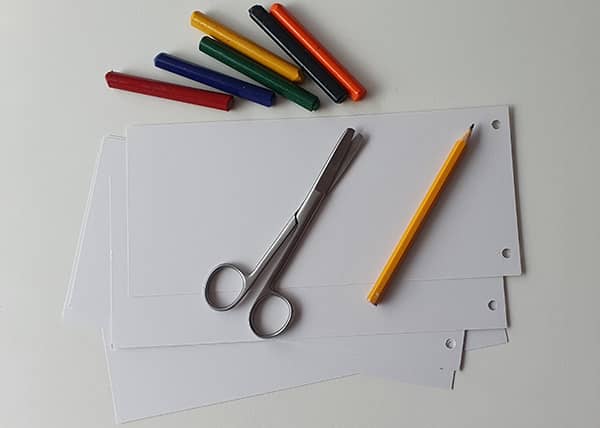
- Thick paper or cardboard. We will need paper or cardboard for both drawing images and to cut letters. Although we could use standard paper, it is recommended to use thick paper or cardboard so the manipulation is easier. Even better is to have paper/cardboard sheets so we can draw each image on a different sheet.
- Pencil. We will need a pencil to draw letters and images. Pencils are convenient since we can make more precise lines than with crayons for example.
- Colored Pencils or crayons. Or any other artist tool like watercolors that will help us decorate our drawing and color letters.
- Scissors. We will use scissors to cut our letters once we made them on paper or cardboard.
- Bonus: Wooden letters. Instead of cutting your own letters, you can also buy wooden letters that will last longer and you will save time since you won’t need to draw and cut letters. The wooden letters are not hard to come by and there are a ton of different wooden letters on Amazon.
How to make the Introduction to Alphabet activity?
We have a video at the beginning of the article that shows how to prepare and conduct the activity. Or read the text ahead for step-by-step instructions for this activity with letters.
1. Take a piece of paper or cardboard and draw an image of your choice. We strongly suggest you start with simple, 3 letter phonetic words to make it easy first exposure to letters. Going with more complex words could be too hard and create frustration in the child. Thankfully, there are many simple phonetic words, for example, ant, fox, cup, sun, dog, web, etc.
2. After the image is done, turn the paper and write the word. Here we will need colored pencils or crayons. A good idea is to use different color letters for vowels and different for consonants. This will help in making the distinction between vowels and consonants and learning them faster. We used blue for vowels and red for consonants. Also, you can write uppercase letters or lowercase letters. It is only important to stay consistent. We have wooden letters that are all small so to keep it consistent, we used small letters in this activity too.
3. Repeat steps 1 and 2 to create as many images as you want.
4. Take an empty piece of paper or cardboard and write thick letters that you will be able to cut with scissors. You will need to create all letters from the images you drew. So for example, if you drew an ant, you will have to draw thick “a n t” letters on another piece of paper. Best to use a regular pencil for this to make it more precise. We will easily color the letters later.
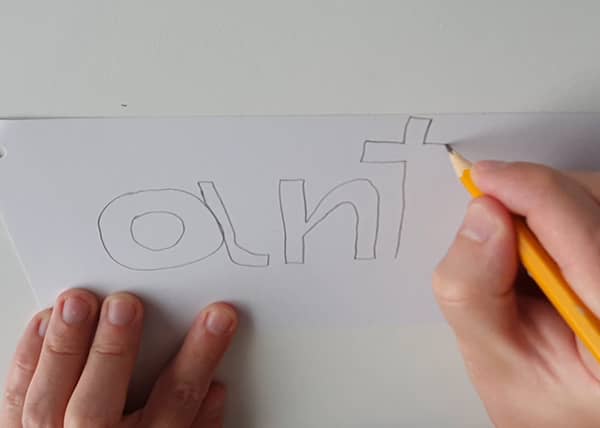
5. Use scissors to cut all of your letters.
6. Now color your letters with the same colors you used to write them on the back side of your images. As already mentioned, we colored vowels in blue and consonants in red.
7. Repeat steps 4 – 7 for every image you created.
8. Time to play! You can spread the alphabet letters on the floor and give the child the cards with images. Then you can match letters to the images on the cards. Let them explore it first without interference. What do they do?
There are a couple of variations with this activity. It can be just a letter matching game, where the goal is to recognize the same letter shapes. If your child already knows letter sounds (phonetic), they can try to read a word (sss, aaa, nnn – sun!) and self-check with the image. Then they can try to write it with paper/wooden letters.
And finally, the child can match correct letters while only looking at the image. The great thing is the child can choose the level of difficulty that is appropriate and keep it fun at all times without the frustration that often comes with learning letters.
What skills will you learn and develop?
- Familiarizing with letters and shapes
- Learning the alphabet and practicing letter sounds
- Phonetic reading
- Learning the difference between vowels and consonants
- Eye-hand coordination and fine motoric skills
- Having fun while practicing reading and writing skills
We hope you and your little ones will have as much fun as we did. And if you’re interested in more similar activities, we have some more for you!
- After you master this simple activity where you introduce letters, you can try 7 fun activities to learn letters and numbers that will help the child to learn further in a fun way.
- Also, you can try to make your own cardboard clock to learn numbers and how to tell the time.
- And lastly, a bit more advanced activity to practice letters – How to make a cipher wheel. This will be more interesting to children that already go to school, and they can get many hours of fun by ciphering and deciphering letters.
Happy learning and don’t forget to keep it fun!
If you’re searching for some great STEM Activities for Kids and Child development tips, you’re in the right place! Check the Categories below to find the right activity for you.

STEM Science
Videos, guides and explanations about STEM Science in a step-by-step way with materials you probably already have at your home. Find new Science ideas.
Read more
STEM Technology
Videos, guides and explanations about STEM Technology in a step-by-step way with materials you probably already have at your home. Find new Technology ideas.
Read more
STEM Engineering
Videos, guides and explanations about STEM Engineering in a step-by-step way with materials you probably already have at your home. New Engineering ideas!
Read more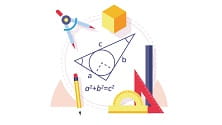
STEM Math
Videos, guides and explanations about STEM Math in a step-by-step way with materials you probably already have at your home. Find new Mathematics ideas.
Read more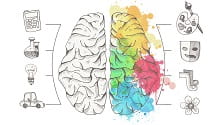
Psychology
Find out all about development psychology topics that you always wanted to know. Here are articles from child psychology and development psychology overall.
Read more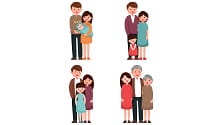
First year of Child’s Life
Following a Child’s development every month from its birth. Personal experiences and tips on how to cope with challenges that you will face in parenting.
Read more